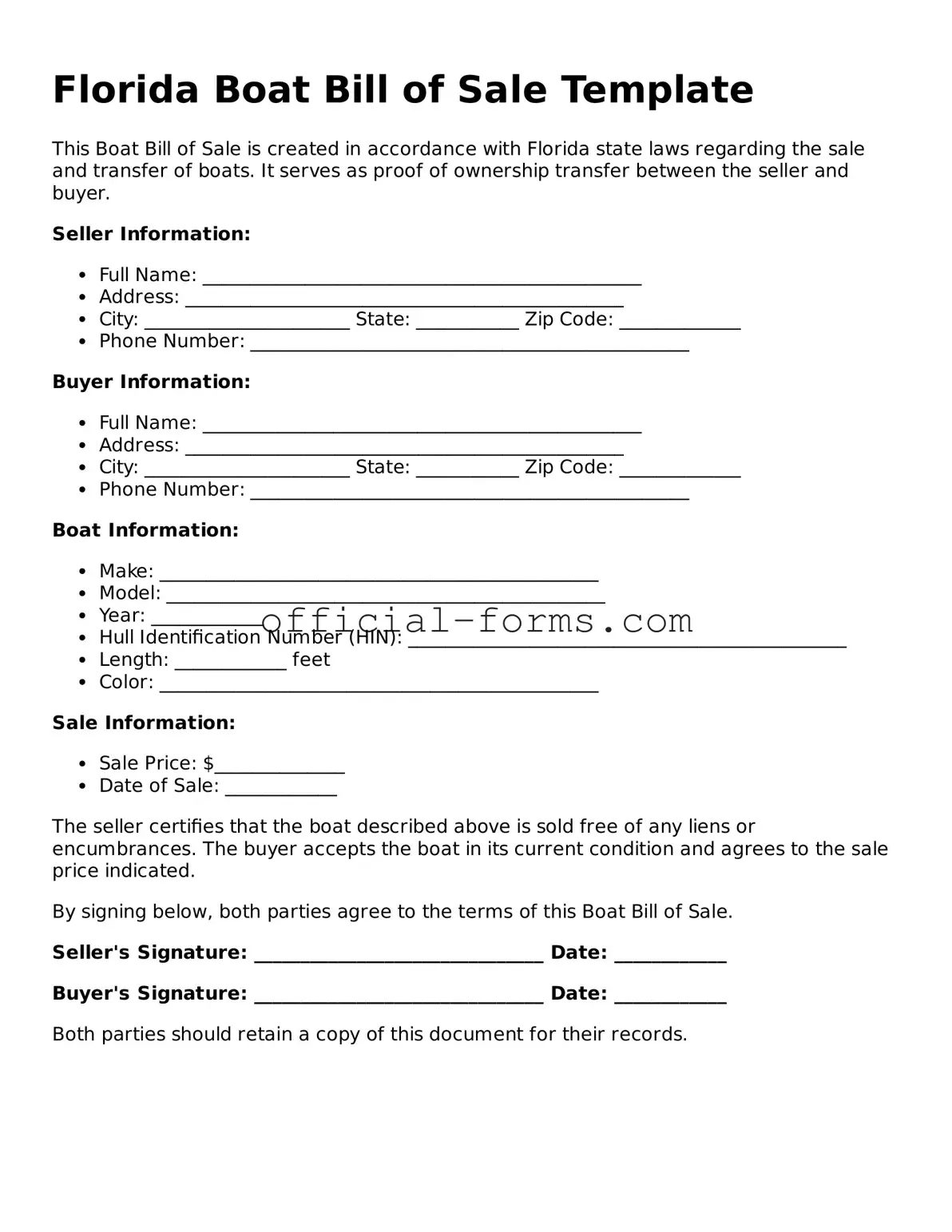Filling out the Florida Boat Bill of Sale form can seem straightforward, but many people make common mistakes that can lead to complications later. One major mistake is not including all necessary details about the boat. Essential information such as the boat's make, model, year, and hull identification number should be clearly stated. Omitting any of these details can create confusion and may affect the transfer of ownership.
Another frequent error is failing to provide accurate buyer and seller information. Both parties should ensure that their names, addresses, and contact details are correct. If any of this information is incorrect, it can cause issues with registration or ownership verification down the line.
Some individuals overlook the importance of signatures. Both the seller and the buyer must sign the form for it to be valid. A missing signature can render the entire document useless, leading to potential disputes or difficulties in proving ownership.
People often forget to include the sale price. The sale price is a critical component of the Bill of Sale. Not stating the price can create uncertainty about the transaction and may raise questions if the transaction is ever reviewed by authorities.
Another mistake is not dating the document. The date of the sale is important for legal purposes. It establishes when the transfer of ownership took place and can be crucial for tax and registration purposes.
Some individuals may use outdated forms or versions of the Bill of Sale. It’s essential to ensure that you are using the most current version of the form, as laws and requirements can change. Using an outdated form may lead to rejection by the Florida Department of Highway Safety and Motor Vehicles.
Finally, not keeping a copy of the completed Bill of Sale is a common oversight. It’s vital for both the buyer and seller to retain a copy for their records. This document serves as proof of the transaction and can be helpful in case any disputes arise in the future.
